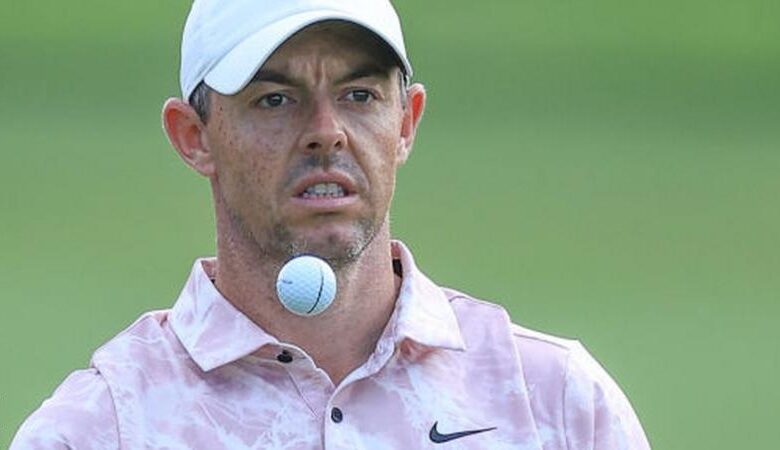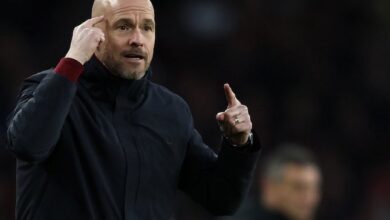‘R&A set to announce new ball rule before year end’

At long last, we are nearing a decision on how the game of golf will deal with the thorny issue of rolling back the golf ball and the outcome may well affect everyone who plays the sport.
The rule makers – the R&A and United States Golf Association – have been grappling with the so called “distance debate” for years and they still agree that something needs to be done.
Their recommendation that a Model Local Rule to allow elite events to impose the use of a distance limiting ball has been largely rejected, despite support from the likes of Tiger Woods and Rory McIlroy.
During the comment period which ended in August, the PGA Tour was particularly outspoken against the move.
Reacting to that the R&A’s chief executive Martin Slumbers outline his options when he told BBC Sport: “We can bifurcate, as we suggested; you change the whole game; or you do nothing.
“And doing nothing is not an option.”
Those comments were made in late summer and now the St Andrews based boss has doubled down, telling Golf Digest: “Once we published our distance report at the start of this process, I was very clear that, for the good of the game, we need to address this issue.”
Today’s top players are hitting the ball too far. Courses are not long enough to cope with 340-yard drives and extending them to maintain the integrity of the challenge facing the best players is expensive, environmentally damaging and often impossible.
The original plan was to only rein back the most proficient players and allow the rest of us to enjoy the benefits of a super-charged ball and forgiving large headed drivers.
On paper, this bifurcation is contrary to one of golf’s most celebrated tenets – that we humble hackers can play the same courses with the same equipment as the world’s best players and therefore measure our inferiority.
In his recent Golf Digest interview, Slumbers admitted: “The game was not happy with the Model Local Rule. There was a view that it would create a bifurcated game at the elite level.
“It was a very strong pushback against that. The PGA Tour was very public about it. So was the PGA of America. A number of players spoke out. And our job is to listen.”
The rules makers were always up against it. Many top players are generously sponsored by golf equipment manufacturers, who have always been reluctant to curb the performance of their products.
Leading stars were therefore always likely to side with the guys who pay them to use their equipment. And at a time of flux in the men’s professional game, the PGA Tour could ill afford to upset those top stars.
There was nothing in it for the American-based circuit to go with anyone other than the golfers they desperately need to remain loyal.
There is a belief among some leading figures that their bifurcation proposals became collateral damage in golf’s ongoing civil war, which was prompted by the arrival of the breakaway LIV tour 19 months ago.
The feeling among senior figures on the European-based DP World Tour is more nuanced. Many are more sympathetic to the notion that driving distances should be hindered by introducing tighter limits on drivers.
“Lessen the sweet spot and players will have to swing slower to make an accurate strike,” reasoned one leading player. “That does not hinder the most exceptional talents, who can combine precision and speed.
“And this would provide the added benefit that the better players become easier to identify.”
But outlawing clubs that cost hundreds of pounds and make the game far more enjoyable for recreational players feels like a drastic step, one that will be hugely unpopular with golfers of most abilities and the manufacturers who produce the clubs.
The original bifurcation idea had plenty of merit. The most significant effects, reducing driving distance by around 15 yards, would only have been felt by players swinging at the highest speeds.
Most club hackers would not have seen much difference if they used the adapted elite balls. And, by the way, there would have been nothing to stop us doing that if we desired such a test.
Say we had secured a tee time at a top championship course, why not buy a sleeve of elite balls to enable us to measure our ability at a venue used for leading events?
Equally clubs could have stipulated that their biggest events be played with the handicapped ball, if they saw fit. And if you are a promising player with ambitions to play top amateur tournaments and beyond, you would probably switch to the elite ball anyway.
Back in the day, the game had this sort of bifurcation. The best players wanted the spin of a softer balata ball that might not fly quite as far, while the rest of us used rock hard missiles to gain distance.
But that bifurcated opportunity seems to have disappeared thanks to what many might feel was myopic hostility towards the proposals.
Now, though, new plans are afoot. “Our responsibility is to the long-term future of the game,” Slumbers added. “We are listening. And we have made a decision about what we are going to do.
“We’re working that through at the moment and will make it public before the end of the year.”




